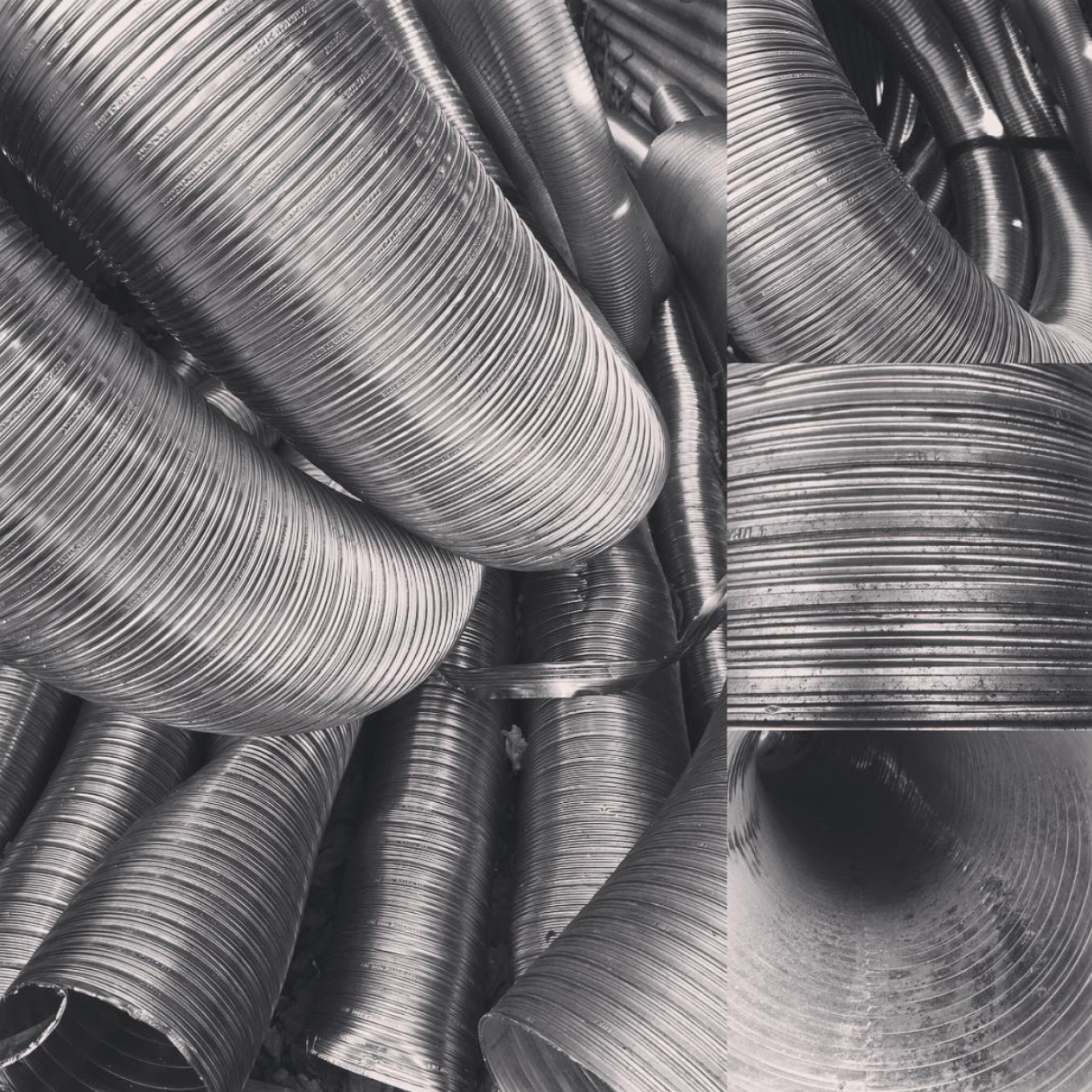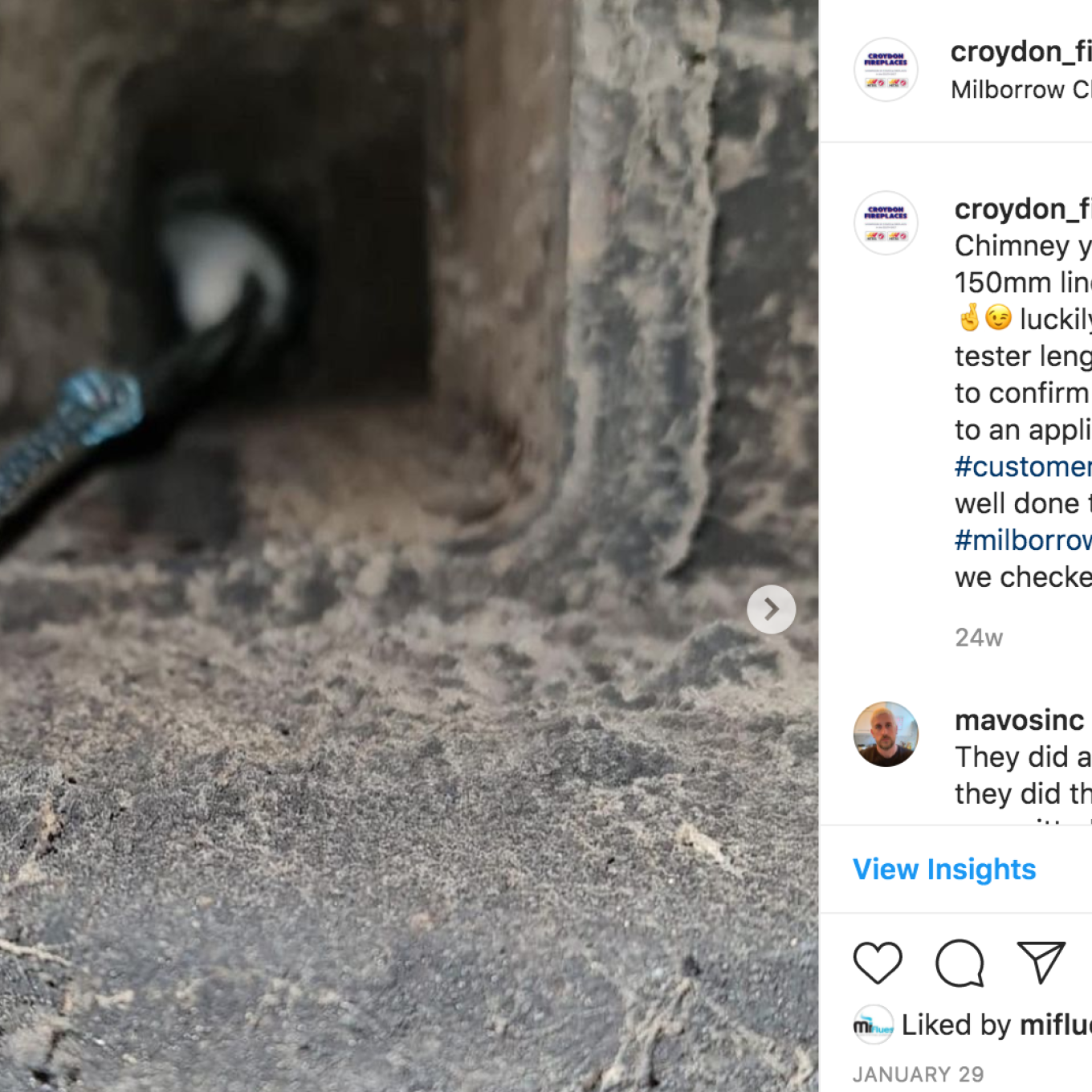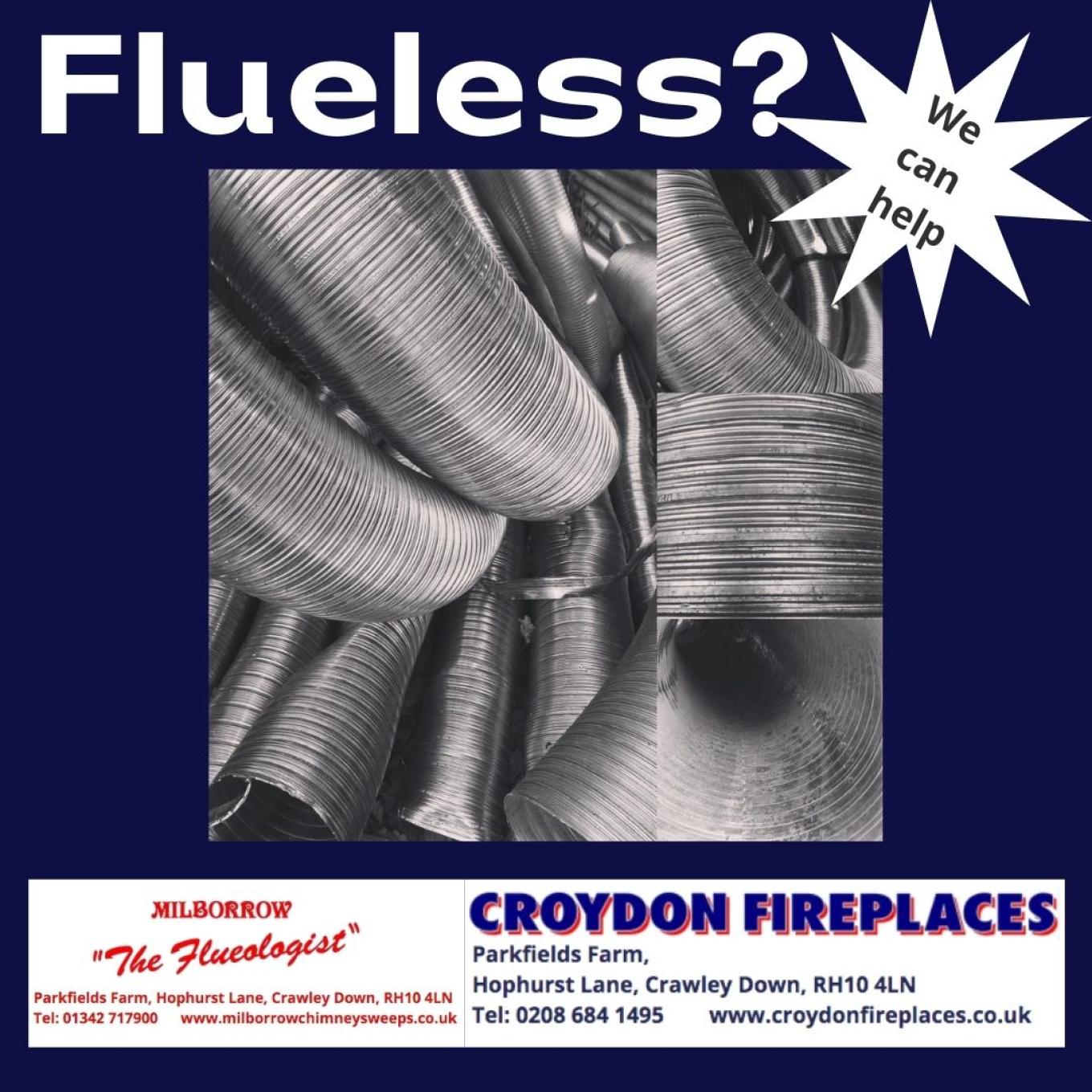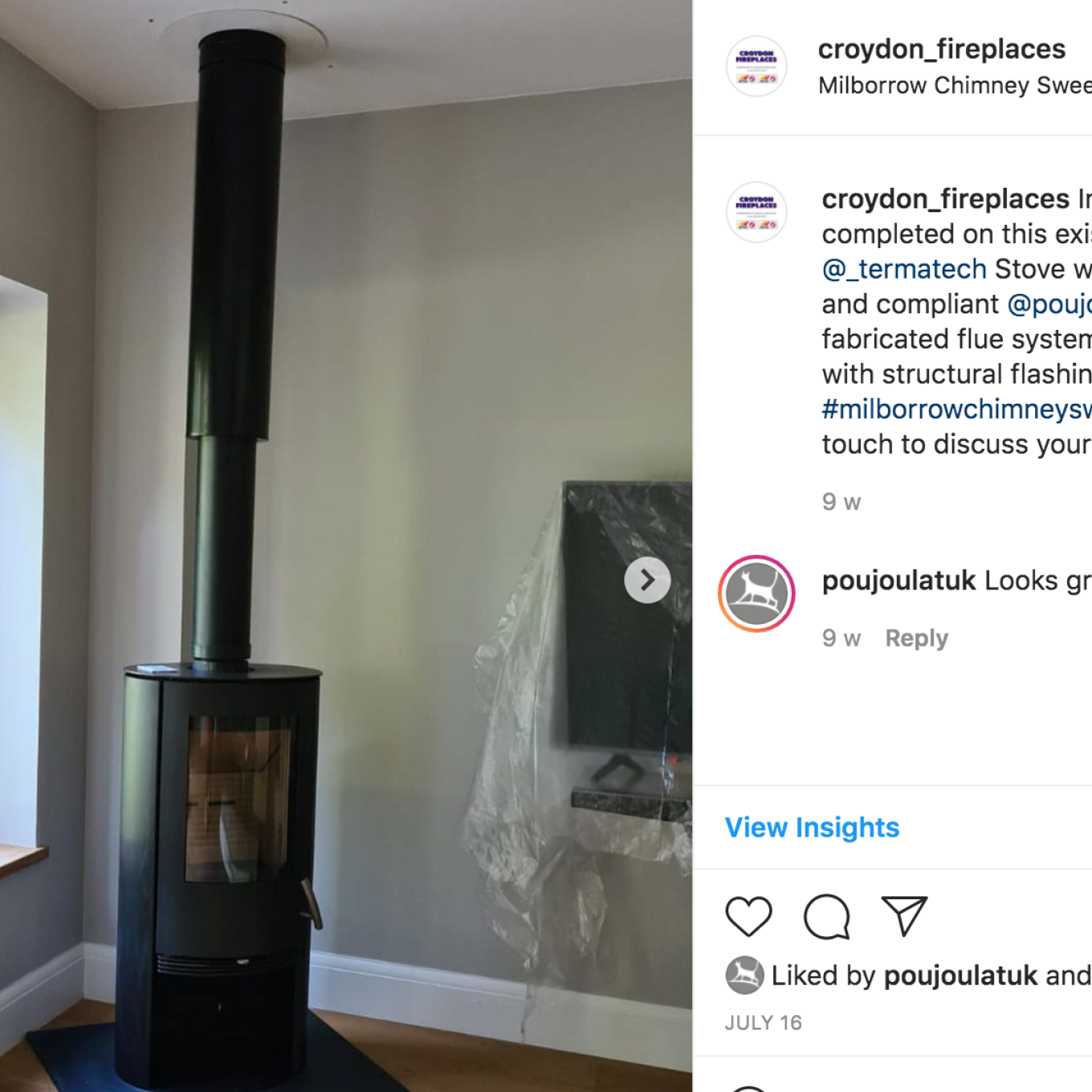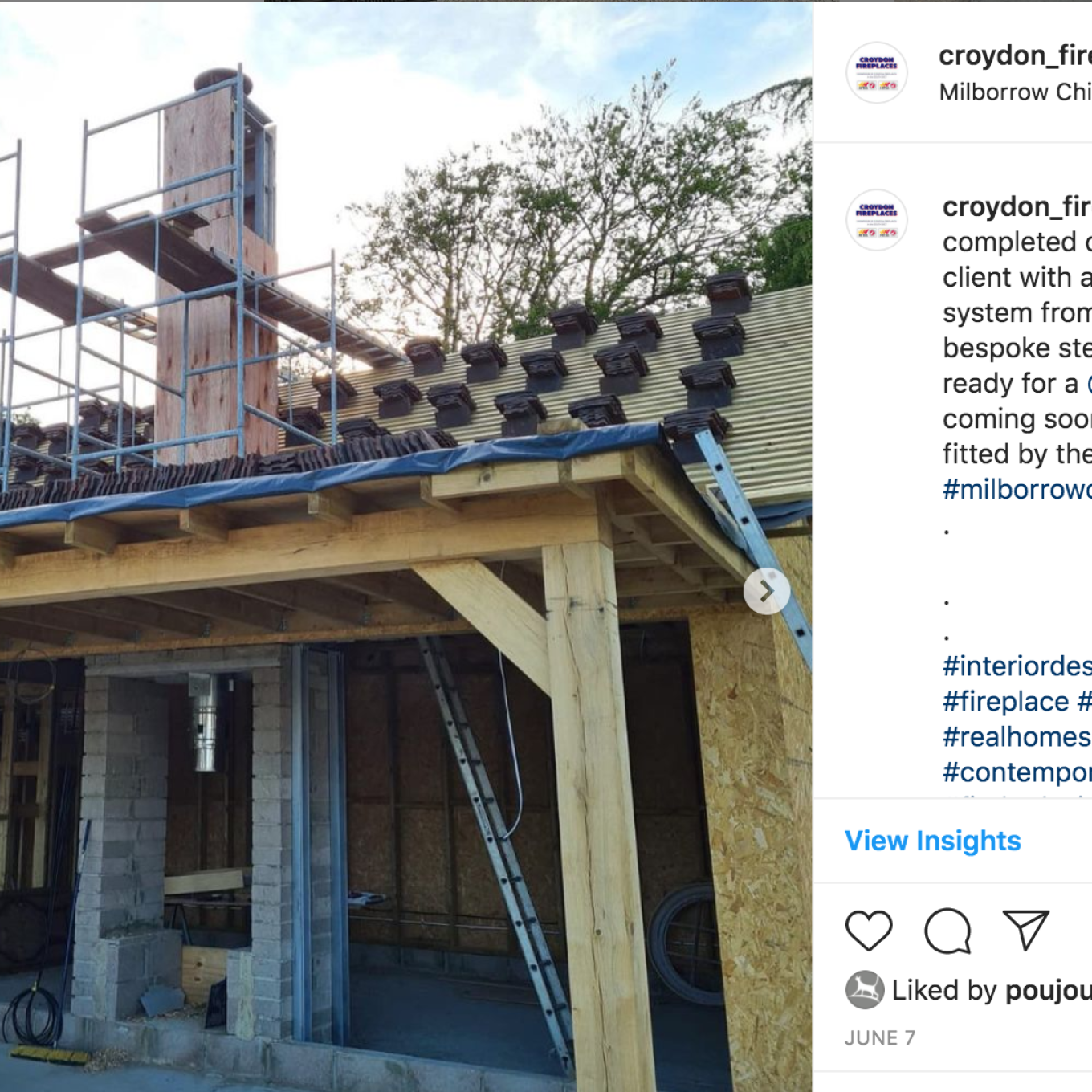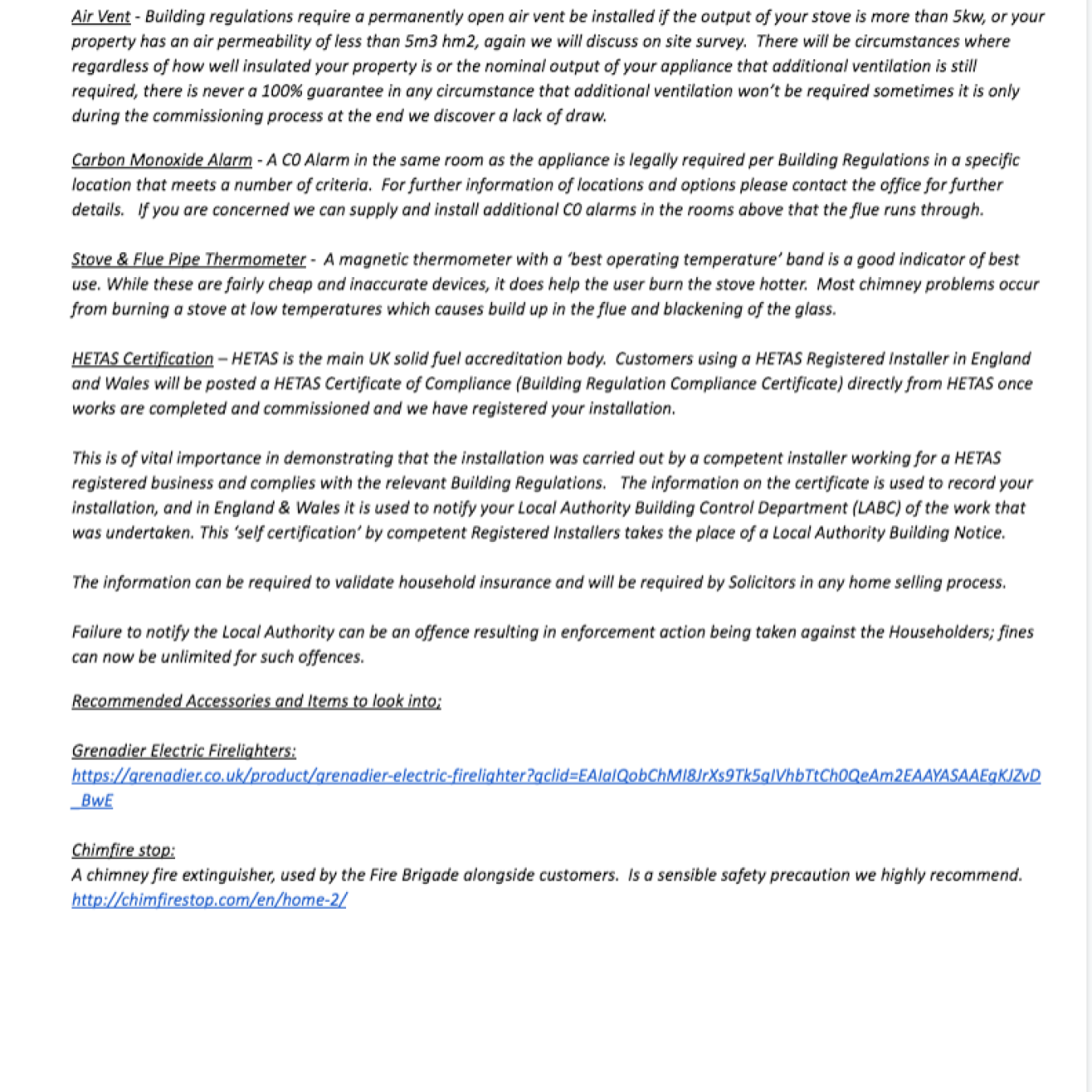So you are Flueless ? Here is a bit of info to help you understand which flue you should use and why.......
These are the types of flue
316g Liners
904g Liners
Gas Flex
These come in various sizes, the most common diameter we use are 5" and 6" flues which most appliances require. Sometimes you will be limited to a 5" liner but you still have a wide range of DEFRA approved appliances to choose from that are approved to function on the small diameter flue. The length of the Flue, depends on the height of your chimney (that is why we always ask you to email us, or show us a picture of the outside of your house from the ground to the top of the chimney. 1. To see what sort of access we can get. 2. To see what sort of length we are looking at installing. Now the 316 liner (tungsten grade - the same as your cutlery) is suitable for most domestic wood burning stoves, whereas, the 904 is a higher grade liner, which is has more chromium content than the 316 and is suitable for multifuel appliances because it can resist sulphuric acid corrosion for longer . Gas Flex liners are... you guessed it, suitable for gas appliances. (Conventional Gas Appliances) as a Balanced Flue Stove/Appliances need a different outlet. Most Flue Liners are flexible and come with a 15/20 year guarantee. So make sure you validate your guarantee.We only install high quality Flue Liners from Mi-Flues which you can register here https://www.mi-flues.com/LinerRegMI.php Chimney Liner - We will install your stove using a stainless steel flexible chimney liner. The chimney liner provides the conditions needed for your stove and chimney to function when the original flue has lost its’ integrity or failed a soundness test:
- A liner will keep the flue diameter constant all the way up the chimney, which helps to keep the gases hot enough to rise up and out of your flue, reducing the likelihood of condensates, chimney fires and in turn improving the draw of your chimney.
- Annual sweeping and maintenance will be a lot easier if the flue is the same size all the way up, resulting in less soot build up.
- Either 316 for burning wood only
- Or 904 for multi fuel burning or if this is your long term property
- We will do the installation using a pot hanger cowl (rather than cementing your liner into your stack, to avoid erosion problems), either 316 or 904 grade stainless steel chimney liner, as above, a bespoke register plate made onsite and all necessary pipework and ancillaries.
Grenadier Electric Firelighters:
Chimfire stop:
A sensible precaution we highly recommend.
http://chimfirestop.com/en/home-2/
Bodji Companion sets and accessories:
https://www.charnwood.com/project/bodj-fair-trade-products/
1.6m3 of kiln dried firewood:
Now that you have a stove you are going to need fuel for it. We recommend kiln dried wood to optimise your stove and chimney performance.

